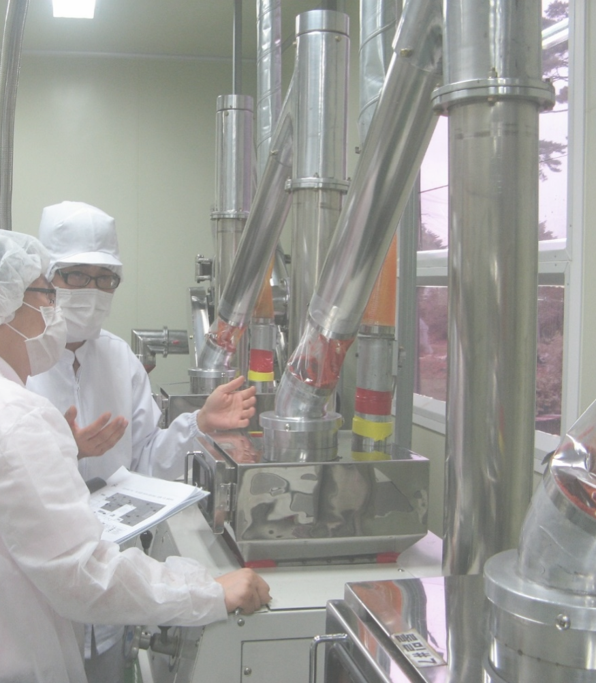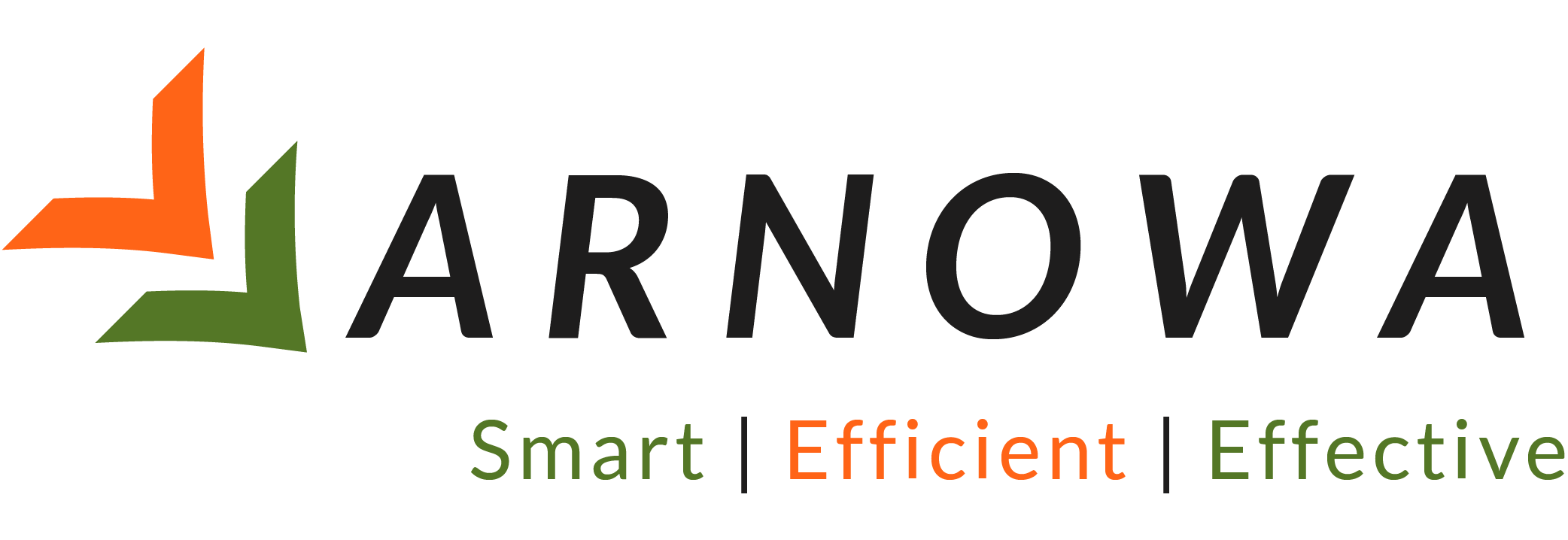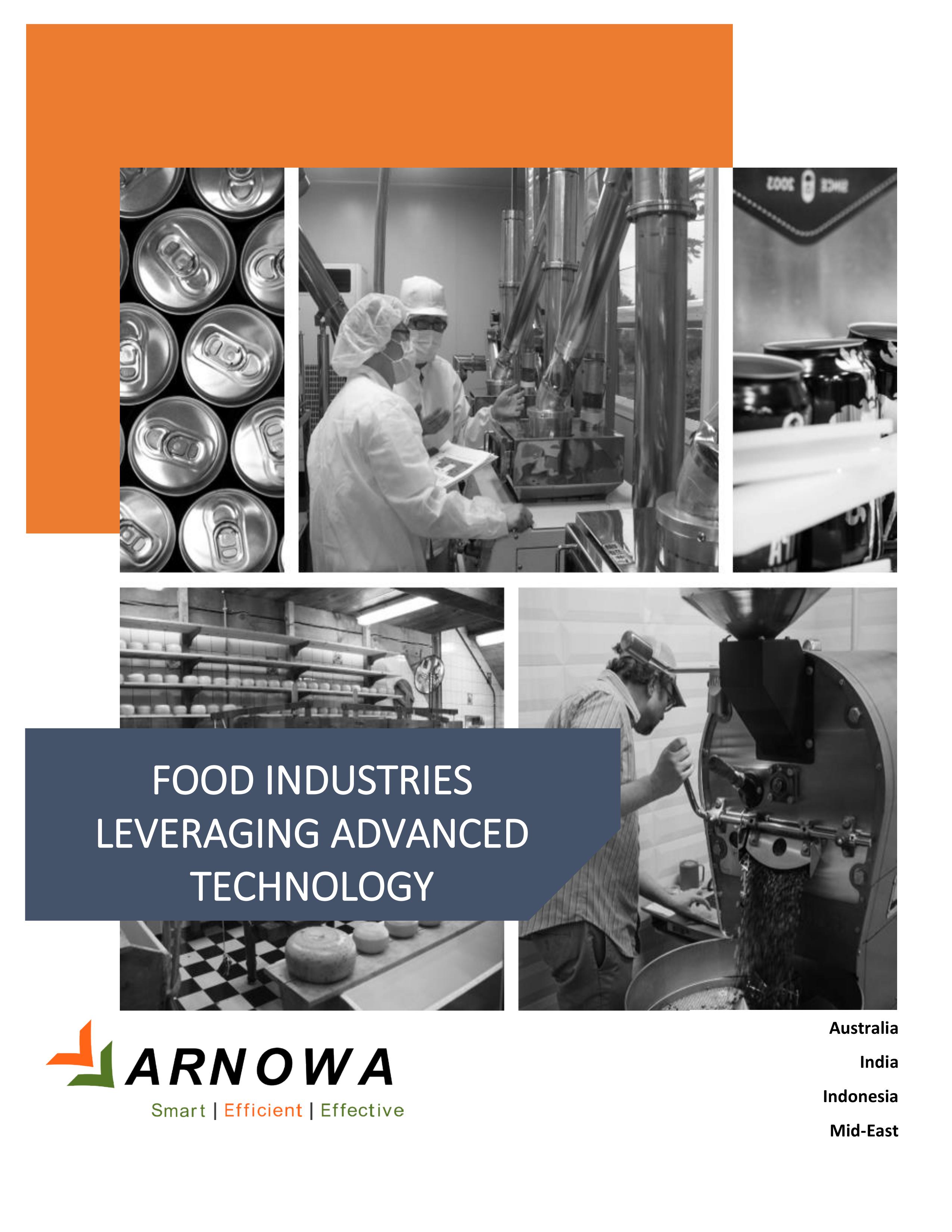Food Industries Leveraging Advanced Technology
INTRODUCTION
The food and beverage industry is an extremely dynamic and evolving industry, where smart technology can open new aspects of profits for businesses that distribute, deliver, and sell food and beverage products. According to a report the IoT and traceability for the food and beverage manufacturing market were valued at about $4.08 billion in market revenue in 2017 and are expected to reach approx. $8.43 billion by 2025, growing at a compound annual growth rate of 9.5%[2].
The food and beverage industries deal with two main problems one is the efficiency and maintenance of processing equipment, and another is maintaining the safety of products throughout the production, packaging, distribution, sale, and consumption. Many problems related to food safety had happened in recent years, resulting in public panic and the government has made food safety a top priority. Now the question arises on how to ensure food safety leveraging emerging technology.[rml_read_more]
The way technology is used always remained different for the food and beverage industry. While most of the sectors have already started adopting the Internet of Things and other emerging technologies, the food and beverage industry has remained unaffected or has at least been slower in adopting the latest technologies. IoT is helping companies to achieve high levels of food safety, improve traceability, cut down wastage, and reduce costs and risks across the different stages of food processing and packaging[2]. IoT is making every aspect of the food industry smarter through a combination of IoT smart connected products gathering data throughout the supply chain and intelligent algorithms, converting them into smart insights[3].
There is no doubt that by adopting IoT, the food and beverage industry can run to its highest potential. IoT is helping companies to achieve high levels of food safety, improve traceability, cut down wastage, and reduce costs and risks across the different stages of food processing and packaging[2].

In this article, we will discuss what are the challenges to the food and beverage industries, how these challenges can be addressed using advanced technologies and their benefits.
THE PROBLEM OF DATA AND ITS COLLECTION
Despite widespread awareness about the potential of data to initiative operational excellence, some problems frequently inhibit the ability of decision-makers to capture, analyze, and use the millions of possible data points within an organization.
- Data Collection is Not Automated: Every machinery offers valuable and potential data points, but it may not be able to gather all critical data or communicate with other production process components.
- Data Exists in Silos: Without proper data transmission infrastructure, the data generated remains at the asset location. Collecting the data from remote sites or extracting from centralized centers delays the timely use of valuable information and adds further cost.
- Data May Require Manual Collection and Calculation: Processing of data obtained from disconnected and sequestered sources needs tedious manual entry and calculation, which is prone to error. Connecting data from isolated sources demand customized solutions adding additional complexity and costs.
- Data Can Lack of Necessary Context: Disparate and disconnected process control systems create data archives lacking contextual information. Without situational and operational data context, data remains sequestered, and analysis and learning opportunities fail to meet the potentials of a connected ecosystem.
- The Volume of Data Is Increasing: As connectivity increases, it allows the operational environment and lowers the barriers to improved data acquisition, antiquated data management systems often fall short when attempting to capture and effectively process the increased data volume.

ADVANCED-DATA INFRASTRUCTURE TO SOLVE DATA PROBLEMS
A comprehensive data infrastructure removes all the hurdles in capturing, finding, converting, and organizing operational data that enables operators and engineers to model enterprise-specific operational intelligence while reducing complexity and cost. With a data infrastructure, assets can be voluntarily examined and compared, and analytics can be used for healthier long-range utilization and capital planning. A unified view empowered by a data infrastructure makes it possible to shift from scheduled maintenance to predictive or condition-based maintenance. All of this overlays the means for improved operational efficiency and higher uptime across a facility or industry.
When the industries directly benefit from developing models to support and predict asset health, process efficiency, resource management, and product quality, their regulatory reporting and compliance get simplified through end-to-end visibility.
As the stakeholders have the right info at the right time, they can examine product quality, improve capital equipment, validate environmental conditions with production, and identify and solve problems.
SMART INFRASTRUCTURE FROM ARNOWA
Smart data infrastructure provided by Arnowa captures data from sensors, equipment, control systems, and other devices and transforms it into rich, real-time insights. Anyone, from food industries like engineers to executives and partners, can then use that insight to reduce costs, dramatically increase overall yield and productivity, improve quality, and make more strategic, data-driven decisions. It also helps to maintain regulatory compliance, recording, and reporting, and keep operational excellence.
OUR OFFERINGS (HARDWARE & SOFTWARE)
- Temperature Probe: It is a specially designed mobile device from Arnowa, which is used to monitor the refrigerated food while they in the cold storage, transport, or in the store refrigerator.
- Sensors: Sensors for parameters such as temperature, vibration, humidity, noise, etc., provide essential information about the process or the entire plant. They either directly measure physical values or use existing measures to indirectly calculate additional information. This information is the enabler for the implementation of advanced automatic functions, process models, as well as condition monitoring.
- Smart Utility Meters (Energy meter, gas meter, and ultrasonic water meter): This helps monitor and manage utilities.
- Wireless Data Transmission Devices (Nodes, Gateway, Edge): These devices store and transmit data to the cloud safely.
- Arnowa Application Software: It helps in the monitoring and visualization of data.
- Data Analytics Support (real intelligence): Our highly qualified and experienced intelligence team will convert the data received from the sensors in the usable form so that industries can use that data into their operational activities.
BENEFITS OF USING SMART TECHNOLOGY IN FOOD INDUSTRIES
Each functional area of the food industry has been significantly getting better with the integration of IoT. For instance, IoT facilitates food companies to ensure superior levels of traceability, food safety, and, therefore accountability all through the farm-to-plate supply chain operations. Moreover, the IoT network in the food supply chain greatly aids to trim down waste, costs, and risks as well in all stages of the procedure.
- Better and Improved Food Safety: Real-time temperature monitoring through advanced infrastructure in the food industry has been eliminating the risk of food illness epidemic considerably. Smart sensors are used to monitor production, shipping, and, most fundamentally, the temperature and humidity. The real-time temperature and humidity tracking sensors allow industries to closely supervise food safety data points, ensures effective cold chain storage, distribution, and management. With IoT, the supply chain will be able to meet standards of global and local regulations. Automated Hazard Analysis and Critical Control Points (HACCP) checklists are being used throughout the manufacturing, production, and transporting procedures thereby companies can get access to meaningful and consistent data that enable them to put into practice some food safety solutions[1]
- Logistics: The distribution chain can be effectually monitored all along with the whole storage and shipping course at the sales points or stores by using RFID (Radio Frequency Identification) transmitters and GPS systems. It enables companies to understand customer’s preferences and better reply to market supply and demands through optimizing production.
The advanced Radio Frequency Identification (RFID) tracking provides supreme visibility into the food supply chain, helps automate delivery and shipping processes, and effectively monitors and controls the temperature. It also enables shippers to track the location of the product with GPS. By collecting meaningful data, shippers can estimate performance in several ways.
- Transparency in Supply Chain: Generally, consumers expect transparency from the sellers. Employing traceability and transparency throughout the global supply chain will aid food agencies to succeed in business by acquiring customer loyalty and trust. Even though international and domestic regulations can amplify the intricacy of the global food supply chain, IoT technology can make it convenient for both companies and consumers to track products.
Further, transparency incorporates some added benefits for companies including improved inventory management, cost savings, and faster lead times. Businesses can obtain such benefits by identifying and solving incompetence in the supply chain, exceeding and meeting food safety regulations, and offering transparency to customers.
- Production and Storage: Sensors can significantly help to perk up quality control, product tracking, workers’ activities, and taking advantage of the real-time analysis for production. Sensors persistently inspect the color and specks throughout flour production, which helps to immediately rectify any inaccuracy. Moreover, sensors gauge the moisture content along with protein or cash content and allow real-time optimization of the production procedure.
- Smarter and More Efficient Operations: Operational efficiency is a buzz word for manufacturers, and every company in the food and beverage industry is aiming to achieve it. Operational efficiency can be increased by integrating workflows and reducing manual processes, connecting business groups and systems, streamlining processes to make better decisions, and implementing process improvements to turn growth into profits[1].
- Wastage Reduction: As per the report of the food and agriculture organization of United Nations, nearly one-third of human food production is wasted each year globally. This not only results in money loss but also tend to damage our surroundings by growing carbon gas in the atmosphere. IoT technology makes it possible to effortlessly monitor the state of all food products and send real-time information to the assigned individual, which decreases food wastage.
- Increased profit: The insight gained by adopting new sensor-driven practices is truly only valuable, though, if fed into systems to facilitate predictive analytics to make better, more informed decisions about future activities[2].
- Energy Savings: Appliances used by restaurants account for a large portion of the electricity bill, and it gets quite tricky for restaurant owners to keep track of their energy usage or to reduce the associated costs. Many times, the root cause of this problem is the power consumed by older kitchen appliances. Additionally, the risk of unexpected breakdown is higher with such appliances, resulting in a jumbled maintenance schedule[2].
- Addressing Issues in Faster Way: Since we know that most of the maintenance is preventive or reactive but not predictive, therefore, by employing remote equipment monitoring, we can foresee issues ahead of their occurrence, thereby saving your money and time as well[1].
REFERENCES
[1]How Internet of Things Is Transforming the Food Industry. Link: https://www.comparethecloud.net/articles/how-internet-of-things-transforming-food-industry/
[2]SHUBHADA KHOKALE, 2019. 5 Ways IoT is Transforming the Food and Beverage Industry. Link: https://www.einfochips.com/blog/5-ways-iot-is-transforming-the-food-and-beverage-industry/
[3]Poulami Singha Roy, 2019. Top Applications for IoT in the Food and Beverage Retail Industry. Link: https://dzone.com/articles/top-applications-for-iot-in-the-food-amp-beverage
[4]Wayne Labs, 2018. How the Industrial Internet of Things is affecting food processing. Link: https://www.foodengineeringmag.com/articles/97170-how-the-industrial-internet-of-things-is-affecting-food-processing
[5]Kristen Runvik, 2017. Food Industry Using the Internet of Things to Make Processing Smarter. Link: https://foodindustryexecutive.com/2017/01/how-the-food-industry-is-using-the-internet-of-things-to-make-processing-smarter/
[6]Witjaksono, G., Rabih, A.A.S., bt Yahya, N. and Alva, S., 2018, March. IoT for Agriculture: Food Quality and Safety. In IOP Conference Series: Materials Science and Engineering (Vol. 343, No. 1, p. 012023). IOP Publishing. Link: https://www.researchgate.net/publication/324273073_IOT_for_Agriculture_Food_Quality_and_Safety#pf8


